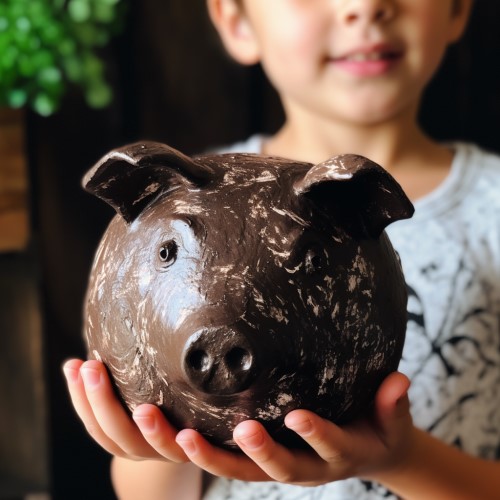DLTK's Crafts for Kids
Pyggy, (oops, I mean) Piggy Banks

Many years ago, in the Middle Ages in England, people used a special kind of clay called "pygg" to make pots and jars. They used these pygg jars to save their coins and keep them safe. Over time (around the 18th century), the word "pygg" started to sound a lot like the word "pig," which is a cute and friendly animal.
So, people thought it would be fun to make their coin-saving jars look like pigs, too! They made these jars in the shape of pigs and called them "piggy banks." Nobody knows exactly who made the very first piggy bank, but lots of artists and crafty people joined in and made their own piggy banks.
Today, piggy banks are loved by children and grown-ups all around the world. They come in many different materials, like ceramic, plastic, paper mache and metal. The piggy bank is now a symbol of saving money, and it reminds us to be wise and save our coins for something special in the future.
The word "pygg" itself likely comes from the Old English word "pyggan," which means "to make earthenware vessels." Over time, as the English language evolved, the word "pygg" came to be associated specifically with the type of clay used to make these vessels.
Because pygg was a common and inexpensive material, it was accessible to people of all social classes. This made it an ideal material for making coin-saving jars, which were used by both the wealthy and the working class to store their savings.